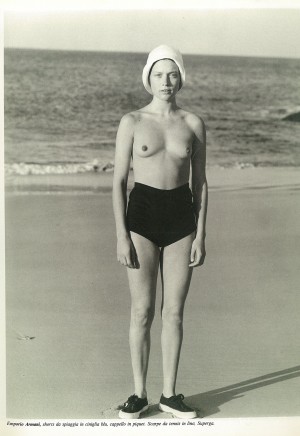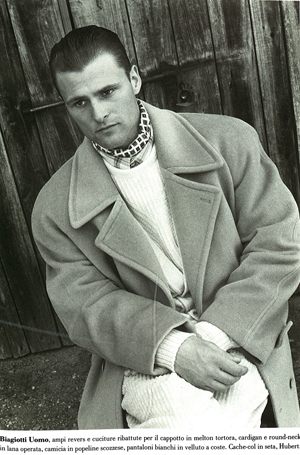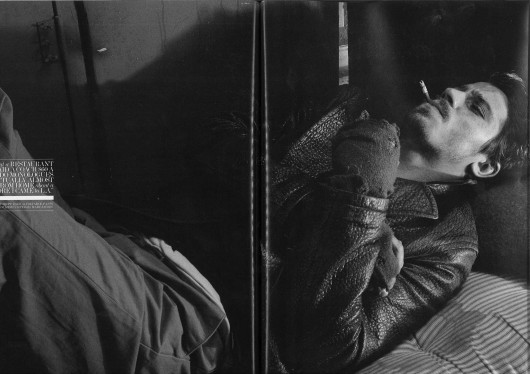L’UOMO VOGUE 1987


Far and wide. Giorgio Armani, 1982. Ph. Aldo Fallai for L’uomo Vogue. Look at the baggy shapes you see today in the shops’ windows: lots of them show suits, raincoats, coats, shirts, sweaters and trousers that remind the lines of this Armani collection, that dates back to 33 years ago. No, I don’t want to write the nth tribute to Giorgio Armani, but it’s instinctive to say: “Everything started from there and there we come back!”. An ultimate back to the roots? No. In two seasons this trend will be replaced by others. But let’s stick to the present; today we’ve recovered the pleasure of wearing large clothes, that are more comfortable and elegant than the too fitted menswear that has been in fashion for years. But pay attention to baggy trousers; when you sit down your ankles show up looking like breadsticks, and give a disproportionate appearance: the risk is to give this impression also when we stand up; so avoid loafers and pointed shoes and prefer monkstraps or brogues with wide and round shape.
Free Associations. I quote the guidelines of the Gianni Versace s/s 1985 menswear collection, from the book Gianni Versace. L’abito per pensare: “Since the collection’s feature is the free matching of the garments, as in the case of the outfit shown, we give indications about the different garments and not about this specific outfit”. The matching (or styling) is one of the key strenght of a designer’s conception. Or of his fashion, when it’s represented in magazines’ shootings, and interpreted by the stylist. The combination of stripes of this tartan pattern, matched with the little contrasting polka-dots on the trousers (picture), was one of the many reference codes of Versace: geometrical prints with positive/negative effect. Ideas that, in menswear, are back again, suggested by the most fashionable brands. Ph. by Claus Wickrath for L’Uomo Vogue (1985)
I love this picture because it has been my very first fashion shooting styled all by myself. After that, I’ve been worn the “cache-col” for a long time. Photo by Thomas Anders.

L’UOMO VOGUE
YES
Una bella foto e un ottimo styling: la moda è in armonia con il personaggio e l’ambiente.
Good picture and great styling: perfect balance between fashion, location and subject.
NO
Non è sempre vero che un attore veste bene la moda: questo è un esempio.
Fashion does not suit every actor. This is an example.
YES
Bella l’idea dello scippo per uno still-life/indossato; e lo scatto ha una bella tridimensionalità.
iI’s nice the bag snatch idea for a still life editorial.The shot has a good three dimensional effect as well.
NO
Disastro su tutta la linea: pessimo il rever della giacca alzato, il fazzoletto nel taschino, il colletto della polo che sparisce sotto il blazer, le pieghe dei pantaloni e l’effetto “ponte” cintura/scarpe.
Complete disaster: awful turn up lapels, the handkerchiefs, the polo collar that disappeares hidden by the blazer, the wrinkled trousers, the belt-shoes “bridge effect”.
INTERVIEW
YES
E’ una foto che evoca un immaginario sensuale. L’impatto sa di vissuto ma – nonostante i guanti lisi e il materasso sporco – riesce lo stesso a trasmettere un feeling di lusso understatement .
This image evokes a sensual imaginary, has a vintage touch and in spite of the worn out gloves and dirty materass, it gives a sense of understated luxury.

GQ UK
NO
Se voleva essere una foto sexy, non sono riusciti nell’intento. Non è neppure elegante nè “speciale”.
If it was supposed to be a sexy picture it just didn’t work out. Is neither classy nor “special”.